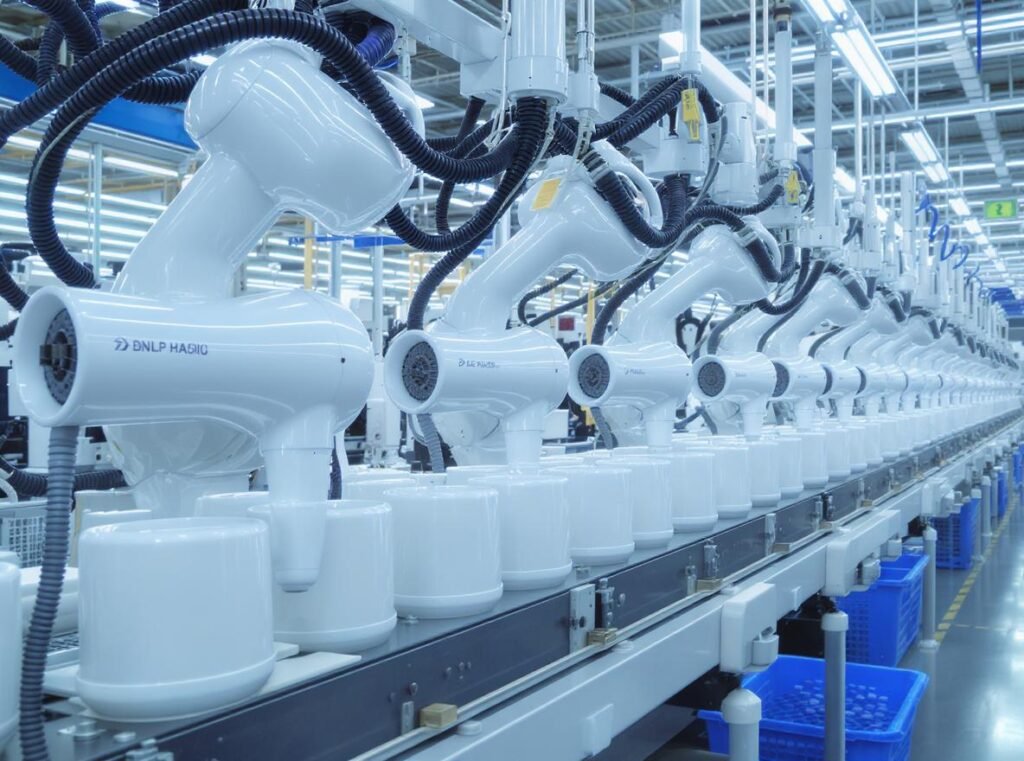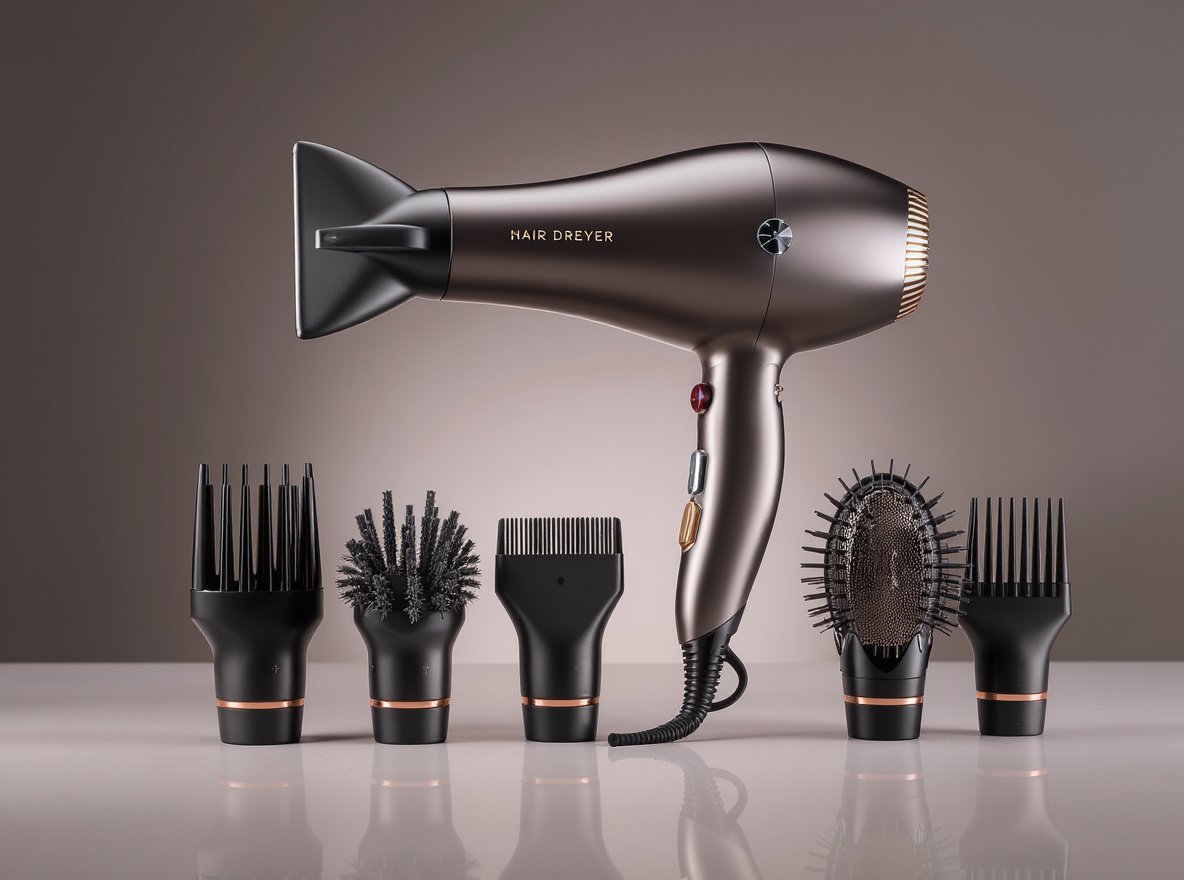Finding the right manufacturing partner for your hair dryer business can feel overwhelming. With countless suppliers claiming expertise, how do you navigate the complex world of OEM/ODM manufacturing to ensure quality, compliance, and profitability for your wholesale business?
The OEM/ODM hair dryer manufacturing process involves design and prototyping, component manufacturing, assembly integration, comprehensive quality testing, and final packaging. OEM manufacturing provides complete design control based on client specifications, while ODM offers pre-existing designs with customization options. The entire process typically takes 3-6 months from concept to finished product.
Whether you’re a distributor looking to launch your own brand or a retailer seeking reliable manufacturing partners, understanding this process is crucial for making informed decisions that protect your investment and ensure market success.
Table of Contents
ToggleWhat’s the Difference Between OEM and ODM Hair Dryer Manufacturing?
Understanding the distinction between OEM and ODM manufacturing is essential before diving into the production process. This choice fundamentally shapes your manufacturing journey, investment requirements, and market positioning strategy.
OEM (Original Equipment Manufacturer) involves producing hair dryers based on your specific design specifications and technical requirements, while ODM (Original Design Manufacturer) provides pre-designed hair dryer models with customization options for branding and minor modifications. The main difference lies in the contracting party’s participation in product design, production management, and control.
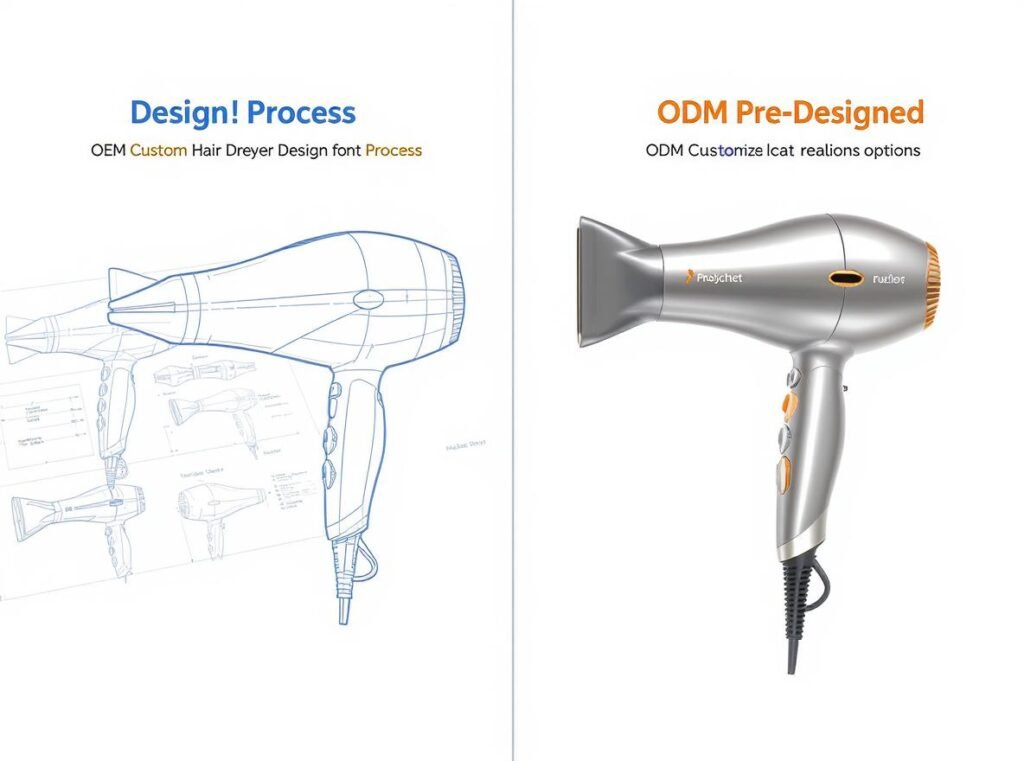
OEM Manufacturing Characteristics
OEM manufacturing puts you in complete control of the design process. You provide detailed specifications, technical drawings, and performance requirements to the manufacturer. This approach allows for unique product features, proprietary technology integration, and complete differentiation from competitors.
High Control and Customization
With OEM manufacturing, clients maintain complete control over design and specifications while the manufacturer handles production. This includes custom motor configurations, unique heating element designs, and proprietary safety features that set your products apart.
Higher Investment Requirements
OEM projects require significant initial investment due to custom tooling, extended development time, and higher minimum order quantities. However, you own the intellectual property and can achieve higher profit margins through product uniqueness.
ODM Manufacturing Benefits
ODM manufacturing leverages existing designs and production capabilities. Manufacturers offer proven hair dryer designs that you can modify with your brand colors, logos, and specific features.
Faster Speed to Market
ODM provides comprehensive solutions including product design and manufacturing, often using pre-existing designs or collaborative development. This approach reduces development time significantly and accelerates market entry.
Cost Efficiency and Design Expertise
ODMs offer design services and pre-existing designs, with design costs spread across multiple clients. This makes ODM more cost-effective for businesses seeking quality products without extensive custom development.
| Manufacturing Type | Development Time | Control Level | Investment | Customization | Typical MOQ |
|---|---|---|---|---|---|
| OEM | 4-6 months | Complete | High | Full | 1,000-3,000 |
| ODM | 2-4 months | Limited | Medium | Moderate | 500-1,000 |
| Hybrid | 3-5 months | Moderate | Medium-High | Selective | 800-2,000 |
How Long Does the Hair Dryer Manufacturing Process Take?
Manufacturing timelines directly impact your inventory planning, marketing campaigns, and cash flow management. Understanding realistic timelines helps you make informed business decisions and set appropriate customer expectations.
The OEM/ODM hair dryer manufacturing process typically takes 3-6 months from initial consultation to finished product delivery. OEM projects require 4-6 months due to custom design and tooling requirements, while ODM projects can be completed in 2-4 months using existing designs and production capabilities.
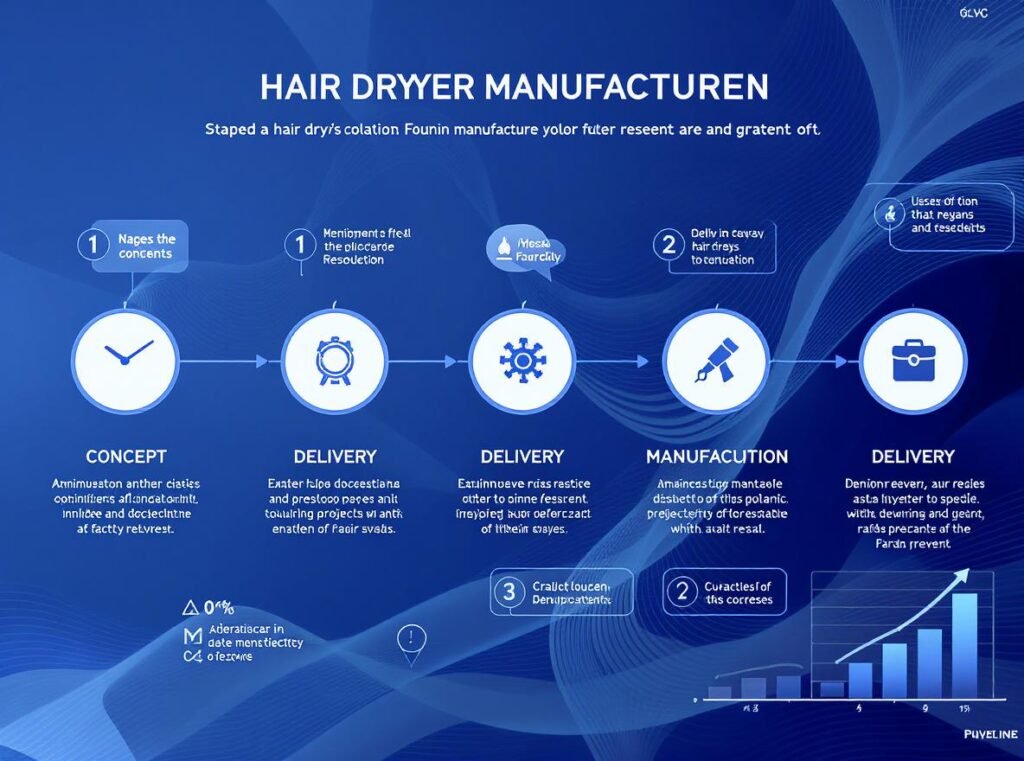
Detailed Timeline Breakdown
Concept and Design Phase (2-4 weeks)
The process begins with conceptualization, 3D modeling, and prototype development using advanced design software. For OEM projects, this involves extensive technical discussions and specification development. ODM projects focus on customization options and branding requirements.
Prototyping and Testing (1-2 weeks)
Manufacturers create functional prototypes for approval and testing. Sample lead times are generally 5 business days for standard samples and 10-15 business days for custom design samples. This phase includes performance testing, safety compliance verification, and aesthetic evaluation.
Production Planning and Tooling (2-3 weeks)
This critical phase involves creating precision injection molds for plastic components and setting up production lines. Custom tooling for OEM projects extends this timeline, while ODM projects utilize existing tooling with minimal modifications.
Testing and Validation (2-3 weeks)
Comprehensive testing ensures products meet safety standards and performance requirements. This includes electrical safety tests, mechanical strength evaluation, temperature rise limits, and fire resistance testing.
Mass Production (4-8 weeks)
The actual manufacturing and assembly process depends on order volume and complexity. For OEM/ODM ion hair dryer orders, lead times typically range from 30 to 60 days, including product development and production phases.
Factors Affecting Timeline
Production timelines vary based on several critical factors:
- Design complexity – Custom features and advanced technology integration
- Order volume – Larger quantities require extended production time
- Seasonal demand – Peak seasons may extend manufacturing schedules
- Component availability – Supply chain disruptions can impact timelines
- Quality requirements – Additional testing extends delivery schedules
What Are the Key Stages in Hair Dryer Manufacturing?
The hair dryer manufacturing process involves multiple interconnected stages that must be carefully coordinated to ensure product quality, safety compliance, and cost-effectiveness. Each stage has specific requirements and quality checkpoints.
Hair dryer manufacturing follows five essential stages: design and engineering, component production, assembly and integration, quality assurance testing, and packaging and distribution. Each stage involves specialized processes and quality control measures to ensure the final product meets international safety standards.
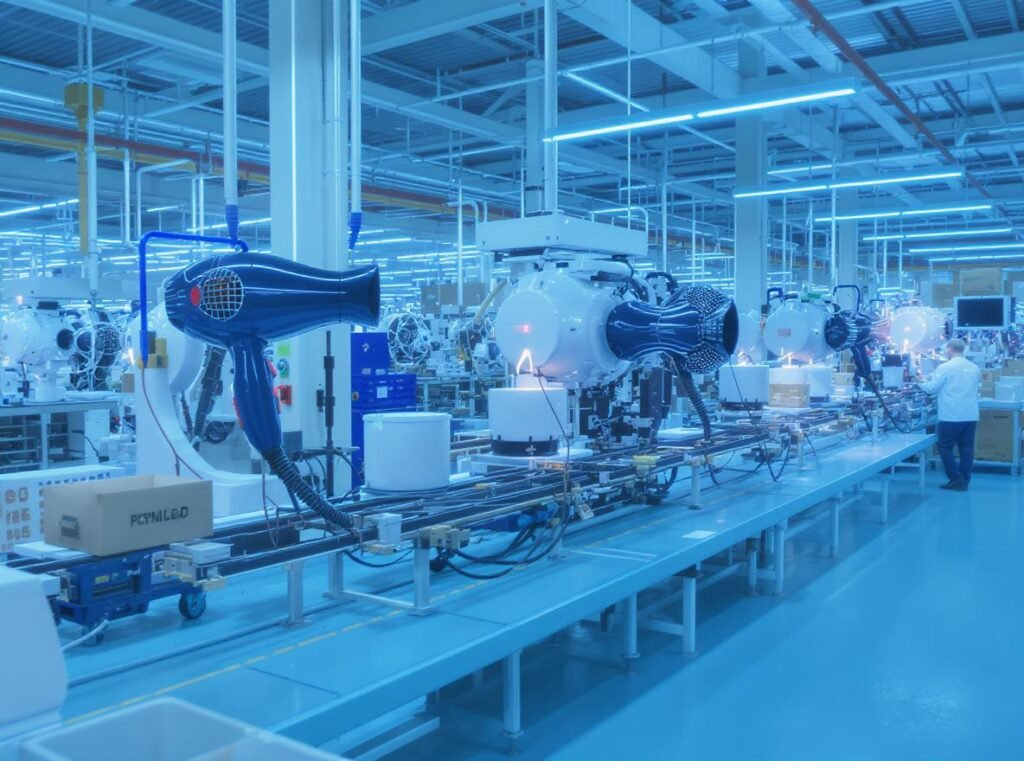
Stage 1: Design and Engineering Phase
The manufacturing process begins with design and prototyping, where engineers and designers create detailed blueprints using Computer-Aided Design (CAD) software to model the device and simulate its performance.
Technical Specifications Development
Design teams work closely with clients to define technical specifications, performance requirements, and safety standards. This includes motor type selection, heating element specifications, airflow requirements, and noise level targets.
3D Modeling and Simulation
Advanced CAD software enables precise modeling and performance simulation before physical prototyping. This reduces development time and identifies potential issues early in the design process.
Material Selection and Specification
Engineers select appropriate materials for each component, considering heat resistance, durability, and cost factors. This includes ABS plastic for housing, nichrome wire for heating elements, and copper wire for motor windings.
Stage 2: Component Production
Hair dryers consist of several critical components manufactured separately using specialized processes and equipment.
Electric Motor Assembly
Motors are made by putting looped copper wire between opposite pole magnets. The manufacturing process involves precise winding techniques and magnet placement to ensure optimal performance and longevity.
Heating Element Creation
Heating elements are made of nichrome (nickel-chromium alloy) wrapped around an insulating mica board. This process requires precise wire wrapping and insulation placement to ensure even heat distribution and safety.
Plastic Component Manufacturing
Plastic components including the fan blade, housing, and various parts are produced through injection molding. Melted plastic is injected into stainless steel dies under high pressure to create precise, consistent parts.
| Component | Manufacturing Process | Key Materials | Quality Standards |
|---|---|---|---|
| Motor Assembly | Wire winding, magnet placement | Copper wire, permanent magnets | IEC 60335-2-23 |
| Heating Element | Nichrome wire wrapping | Nichrome alloy, mica insulation | UL 1727 compliance |
| Plastic Housing | Injection molding | ABS plastic, heat-resistant compounds | Material safety standards |
| Safety Components | Precision assembly | Bimetallic strips, thermal sensors | Thermal protection standards |
Stage 3: Assembly and Integration
The assembly process combines automated equipment with skilled manual labor to integrate all components into functional hair dryers.
Electrical Component Installation
Assembly begins with fitting electrical components into the bottom half of the plastic shell. This includes motor installation, heating element placement, and control circuit integration.
Housing Assembly and Sealing
Once electrical components are secured, the top half of the shell is locked into place using precision fastening techniques. Proper sealing ensures safety and prevents component exposure.
Quality Control Checkpoints
Multiple quality control checkpoints throughout assembly ensure each unit meets specifications before proceeding to the next stage. This includes electrical continuity testing, mechanical fit verification, and visual inspection.
Stage 4: Quality Assurance and Testing
Comprehensive testing ensures products meet safety standards and performance requirements before packaging and distribution.
Electrical Safety Testing
Each hair dryer undergoes rigorous electrical safety testing including high voltage testing at AC 110/220V, insulation resistance measurement, and grounding verification.
Performance Testing
Performance testing includes power performance testing for rated power compliance, airflow measurement, temperature control verification, and noise level testing to ensure compliance with specifications.
Durability and Life Testing
Products undergo continuous operation validation and stress testing to verify long-term reliability and performance consistency.
Safety Compliance Verification
Final testing ensures compliance with international safety standards including IEC 60335-2-23, UL 859/1727, and CE certification requirements.
Stage 5: Packaging and Distribution
Final products are cleaned, polished, and packaged with appropriate documentation and accessories according to brand specifications.
Final Product Preparation
Products undergo final cleaning and polishing to ensure aesthetic quality. This includes removing assembly residue, applying protective coatings, and installing accessories.
Custom Packaging Solutions
Manufacturers provide custom packaging solutions including branded boxes, instruction manuals, and promotional materials tailored to your market requirements.
Documentation and Compliance
Each shipment includes comprehensive documentation including safety certificates, test reports, and compliance documentation required for international trade.
What Quality Standards Must OEM/ODM Hair Dryers Meet?
Quality standards and safety compliance are non-negotiable aspects of hair dryer manufacturing. Understanding these requirements protects your business from liability while ensuring customer safety and market acceptance.
OEM/ODM hair dryers must comply with multiple international safety standards including IEC 60335-2-23 (International), UL 859/1727 (USA), CE certification (Europe), and various regional requirements. These standards cover electrical safety, thermal protection, mechanical durability, and electromagnetic compatibility.
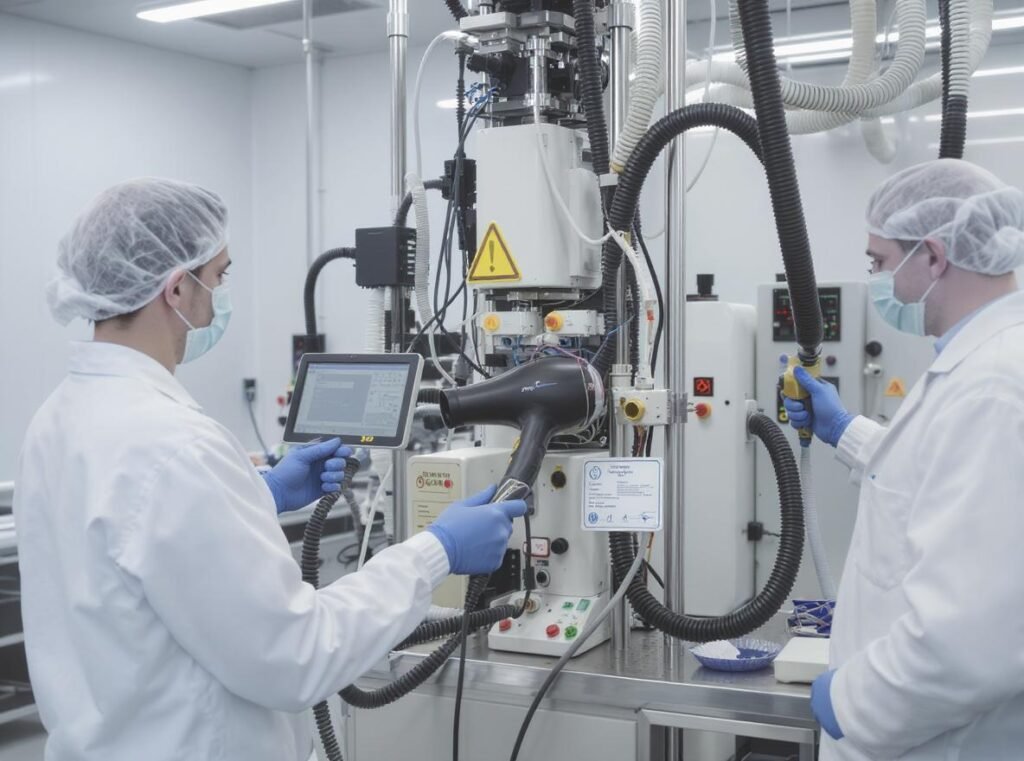
International Safety Standards
IEC 60335-2-23 Compliance
Hair dryers must meet IEC 60335-2-23 standards, which deal with safety requirements for electric appliances for skin or hair care. This comprehensive standard covers electrical safety compliance, mechanical safety requirements, temperature control systems, and fire resistance specifications.
Regional Certification Requirements
Different markets require specific safety certifications that manufacturers must obtain before selling hair dryers:
- United States: UL 859 (household appliances) or UL 1727 (commercial appliances)
- European Union: CE certification with LVD, EMC, and RoHS compliance
- China: CCC (China Compulsory Certification) for domestic market
- Other regions: Local safety standards and certification requirements
Comprehensive Testing Requirements
Electrical Safety Testing
Testing requirements include leakage current measurement, insulation withstand voltage tests, grounding verification, and electrical component safety evaluation.
Mechanical and Thermal Safety
Testing covers shell strength evaluation, power cord tension tests, surface temperature measurement, and overheat protection validation.
Fire and Material Safety
Safety testing includes material flammability assessment, internal wiring safety evaluation, and thermal cut-off feature validation.
Safety Feature Requirements
Mandatory Safety Features
Hair dryers must include specific safety features such as:
- Integral immersion protection – Automatic shut-off when exposed to water
- Thermal cut-off switches – Fail-safe temperature controls
- Overheating protection – Automatic shut-off mechanisms
- Appropriate warning labels – Clear safety instructions and warnings
Quality Materials and Construction
Products must use heat-resistant and durable components, quality electrical insulation, and robust mechanical construction to ensure long-term safety and reliability.
How Do You Choose the Right OEM/ODM Hair Dryer Manufacturer?
Selecting the appropriate manufacturer requires careful evaluation of multiple factors that directly impact product quality, delivery reliability, and business success. The wrong choice can result in quality issues, compliance problems, and damaged reputation.
Choose an OEM/ODM hair dryer manufacturer based on research and development capabilities, manufacturing credentials, comprehensive certifications, production capacity, and service support. Evaluate their track record, quality control systems, technical expertise, and ability to meet your specific requirements and timelines.

Research and Development Capabilities
Design and Innovation Expertise
The first consideration should be the manufacturer’s R&D ability and recent investment in innovation. Look for companies with strong technical teams, proven track records in product development, and capabilities in advanced technologies like brushless motors and ionic technology.
Technical Team Strength
Evaluate the manufacturer’s engineering and design capabilities, including their ability to handle complex customization requirements and integrate new technologies into existing products.
Innovation Track Record
Review recent product developments, patents, and technology partnerships that demonstrate the manufacturer’s commitment to innovation and market leadership.
Manufacturing Credentials and Certifications
Essential Qualifications
Manufacturers must possess appropriate certifications including:
- ISO 9001 – Quality management systems
- CE, UL, CCC certifications – Safety and compliance
- RoHS, REACH compliance – Environmental and material safety
- Factory audit certificates – Third-party facility evaluations
Quality Control Systems
Verify that manufacturers implement comprehensive quality control processes including incoming material inspection, in-process monitoring, final product testing, and statistical process control.
Production Capabilities
Assess manufacturing capacity, equipment quality, and technological capabilities. Look for modern injection molding equipment, automated assembly lines, and comprehensive testing facilities.
Service and Support Evaluation
Comprehensive Service Offerings
Evaluate service capabilities including:
- After-sales support – Technical assistance and customer service
- Warranty terms – Product guarantees and repair services
- Communication efficiency – Response times and language capabilities
- OEM/ODM flexibility – Customization options and minimum order quantities
Supply Chain Management
Assess the manufacturer’s supply chain reliability, material sourcing capabilities, and logistics management to ensure consistent delivery and quality.
Red Flags and Risk Factors
Warning Signs to Avoid
- Unrealistic pricing or delivery promises
- Lack of proper certifications or documentation
- Poor communication or slow response times
- No factory visit opportunities or transparency
- Inadequate quality control systems
Risk Mitigation Strategies
- Request factory audits and facility tours
- Verify customer references and testimonials
- Require prototype testing and approval processes
- Establish clear quality specifications and testing requirements
- Implement staged payment terms tied to milestones
What Are the Costs Involved in OEM/ODM Hair Dryer Manufacturing?
Understanding manufacturing costs is essential for accurate pricing strategies, profit margin calculations, and business planning. Multiple factors influence total costs beyond the basic unit price.
OEM/ODM hair dryer manufacturing costs include material expenses (60-70% of total), labor and production costs (15-20%), development and tooling fees ($5,000-$50,000), testing and certification ($2,000-$10,000), and packaging costs ($1-$3 per unit). Most manufacturers require minimum order quantities of 100-1,000 units with pricing typically between $50-80 per unit.
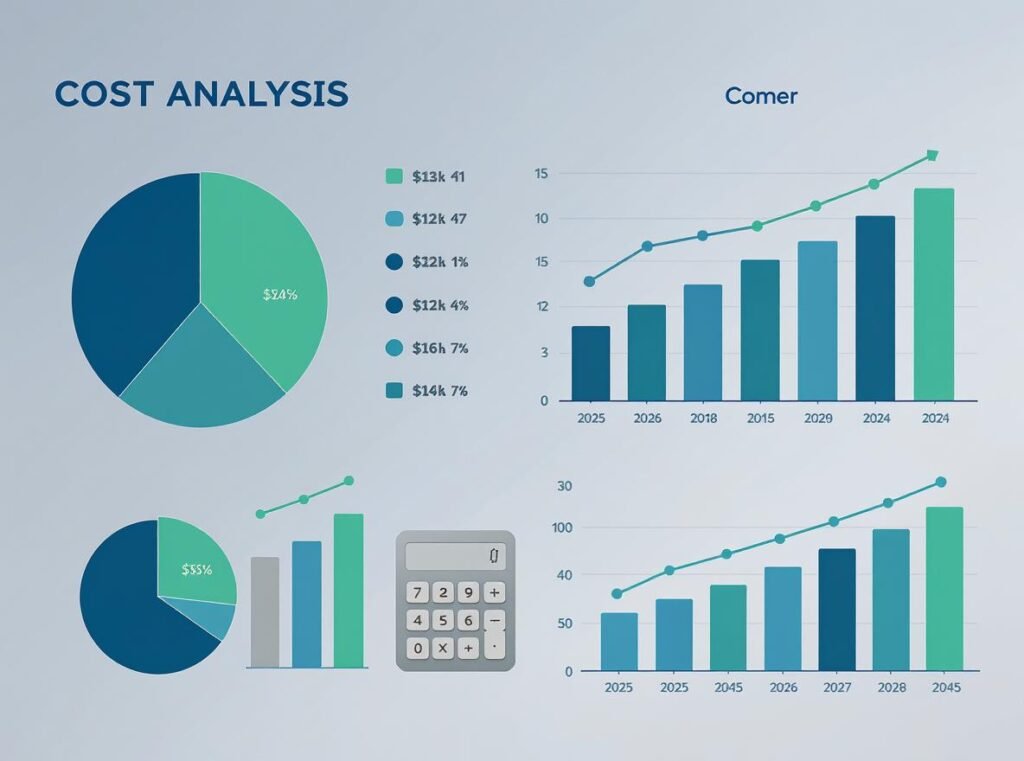
Material Cost Components
Primary Material Expenses
Material expenses typically comprise the largest portion of manufacturing costs, including:
- Plastic components – ABS and heat-resistant materials for housing
- Electrical parts – Motors, heating elements, and control circuits
- Specialized materials – Ceramic, tourmaline, and ionic technology components
- Safety components – Thermal protection devices and safety switches
Component Quality Impact
Higher-quality materials increase unit costs but improve product reliability, safety, and customer satisfaction. Premium components like brushless motors and ceramic heating elements command higher prices but offer superior performance.
Labor and Production Costs
Manufacturing Labor Expenses
Labor costs vary significantly by manufacturing location, with Chinese manufacturers typically offering competitive rates due to efficient production systems and skilled workforce availability.
Cost factors include:
- Assembly line workers – Skilled technicians for component installation
- Quality control staff – Inspection and testing personnel
- Overhead expenses – Factory rent, utilities, and equipment maintenance
- Management costs – Production planning and supervision
Development and Tooling Investments
Initial Development Costs
Development expenses include design services, prototyping, and engineering support. These one-time costs are typically amortized across production volumes.
Tooling and Mold Creation
Tooling costs vary significantly between OEM and ODM projects:
- OEM projects – Custom molds costing $15,000-$50,000
- ODM projects – Existing tooling with minimal modification costs
- Hybrid approaches – Partial tooling modifications for specific features
| Cost Category | OEM Projects | ODM Projects | Hybrid Approach |
|---|---|---|---|
| Development | $10,000-$30,000 | $2,000-$8,000 | $5,000-$15,000 |
| Tooling | $15,000-$50,000 | $1,000-$5,000 | $8,000-$25,000 |
| Testing/Certification | $5,000-$15,000 | $2,000-$8,000 | $3,000-$10,000 |
| Unit Cost | $15-$25 | $8-$15 | $12-$20 |
Minimum Order Quantities and Pricing
MOQ Requirements and Rationale
Most OEM/ODM manufacturers require minimum order quantities ranging from 100 to 1,000 units. MOQ requirements are driven by:
- Production setup costs – Tooling and line configuration expenses
- Material procurement – Bulk purchasing requirements and economies of scale
- Quality control – Testing and inspection cost distribution
- Operational efficiency – Optimizing production runs and resource utilization
Pricing Factors and Negotiations
Unit pricing depends on volume commitments, customization complexity, and feature requirements. Negotiate volume discounts and consider annual purchase agreements for better pricing terms.
How Do You Ensure Product Quality in OEM/ODM Manufacturing?
Quality assurance requires comprehensive testing and control measures throughout the manufacturing process. Implementing robust quality systems protects your brand reputation and ensures customer satisfaction.
Ensure OEM/ODM hair dryer quality through comprehensive quality control systems including incoming material inspection, in-process monitoring, final product testing, third-party audits, and continuous improvement programs. Implement statistical process control, maintain detailed documentation, and establish clear quality specifications with measurable standards.
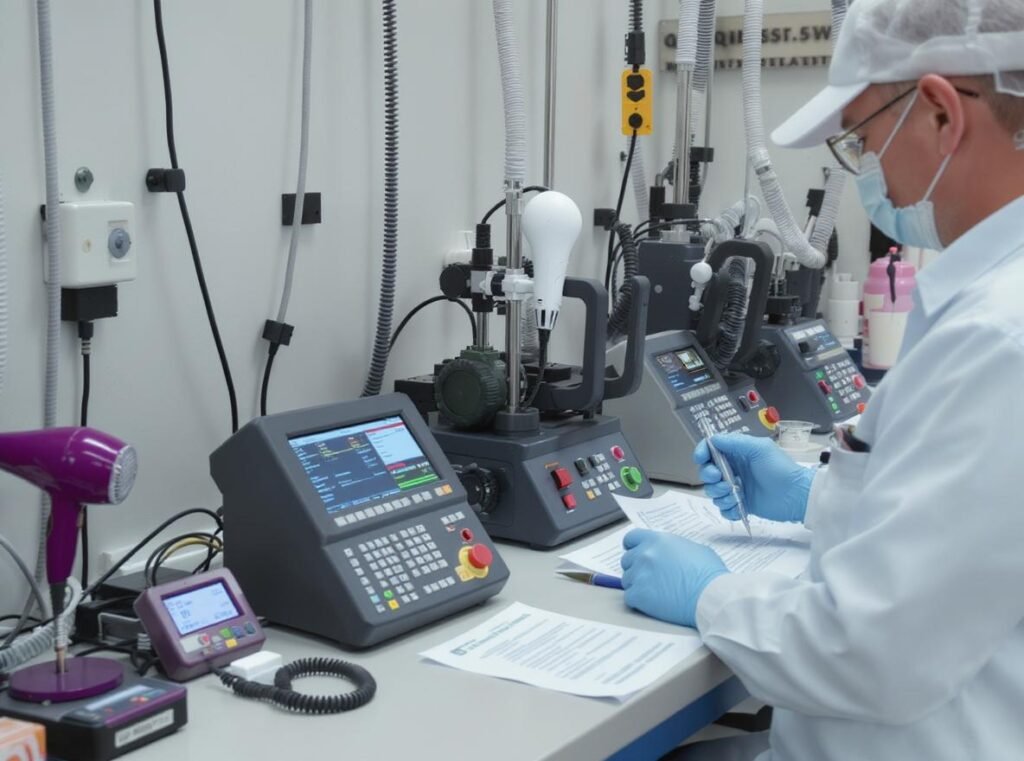
Quality Control Processes
Incoming Material Inspection
All components must undergo rigorous inspection before assembly including dimensional verification, electrical testing, material compliance checks, and supplier certificate validation.
In-Process Quality Monitoring
Implement quality checkpoints throughout the assembly process including:
- Component installation verification – Proper placement and connection
- Electrical continuity testing – Circuit integrity and safety
- Mechanical fit assessment – Proper assembly and operation
- Visual inspection – Cosmetic quality and finish standards
Final Product Testing
Comprehensive final testing includes:
- Performance testing – Power output, airflow, and temperature control
- Safety compliance – Electrical safety and thermal protection
- Durability testing – Life cycle and stress testing
- Cosmetic inspection – Finish quality and branding verification
Testing and Certification Management
Comprehensive Testing Protocols
Testing protocols ensure products meet safety and performance standards including:
- Electrical safety testing – Insulation, grounding, and voltage compliance
- Mechanical safety evaluation – Structural integrity and durability
- Thermal performance testing – Temperature control and protection systems
- Electromagnetic compatibility – EMC compliance and interference testing
Third-Party Certification
Utilize accredited testing laboratories for safety certification and compliance verification. This provides independent validation of product quality and safety.
Supplier Quality Management
Supplier Qualification and Monitoring
Establish strong relationships with certified suppliers through:
- Supplier certification programs – Verifying capabilities and quality systems
- Regular factory audits – On-site assessments and system evaluations
- Performance monitoring – Continuous quality tracking and improvement
- Communication protocols – Clear specifications and expectations
Risk Management and Continuous Improvement
Implement risk management strategies including:
- Component quality verification – Preventing substandard materials
- Process control monitoring – Maintaining consistent manufacturing standards
- Safety feature validation – Ensuring all safety mechanisms function properly
- Feedback integration – Customer input and warranty claim analysis
Summary
The OEM/ODM hair dryer manufacturing process involves five critical stages from design to distribution, typically requiring 3-6 months for completion. Success depends on understanding the differences between OEM and ODM approaches, selecting qualified manufacturers with proper certifications, managing costs effectively, and implementing comprehensive quality control measures.
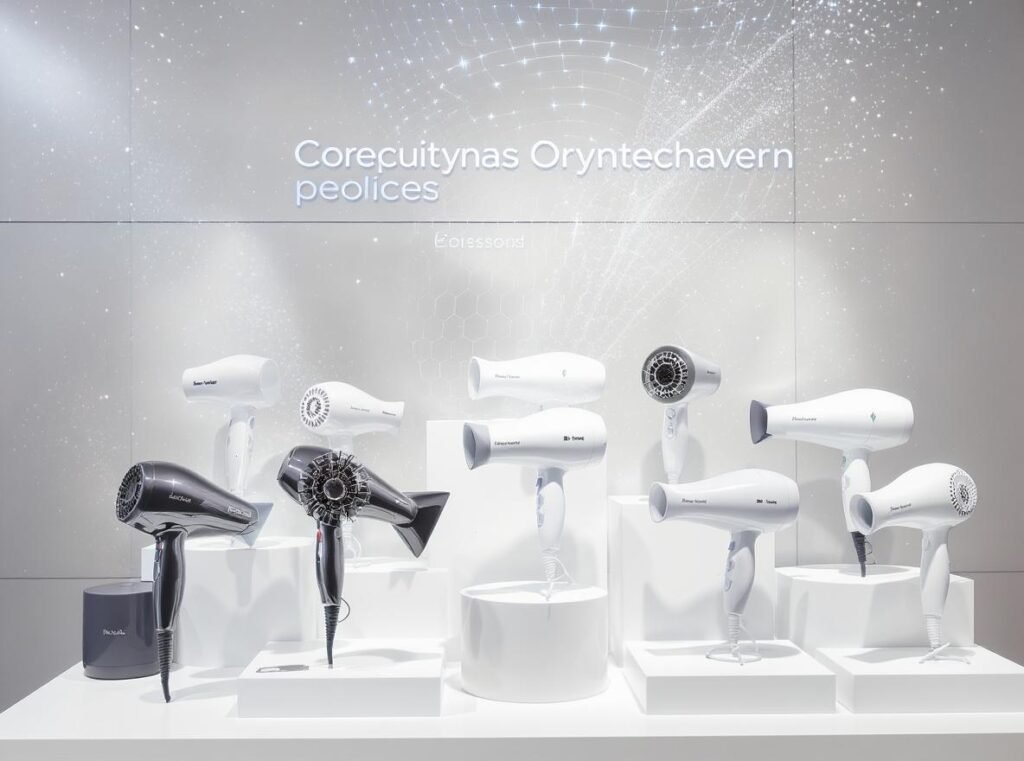
Ready to start your hair dryer manufacturing project? Explore our advanced P1C high-speed hair dryer featuring brushless motor technology and ionic conditioning. Contact Laifex today to discuss your OEM/ODM requirements and discover how our expertise can help you succeed in the competitive hair care market.

